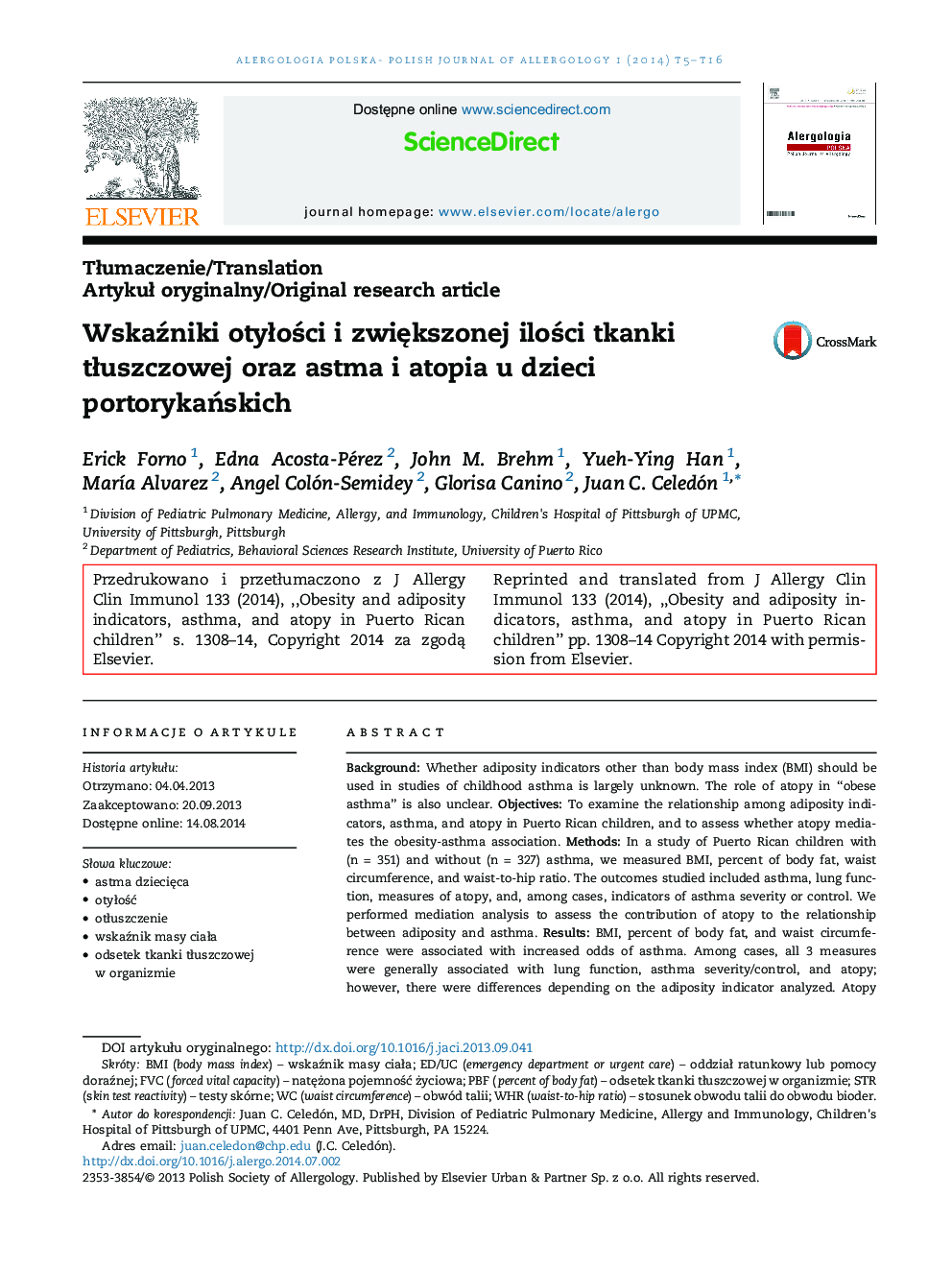| Article ID | Journal | Published Year | Pages | File Type |
|---|---|---|---|---|
| 3184307 | Alergologia Polska - Polish Journal of Allergology | 2014 | 12 Pages |
BackgroundWhether adiposity indicators other than body mass index (BMI) should be used in studies of childhood asthma is largely unknown. The role of atopy in “obese asthma” is also unclear.ObjectivesTo examine the relationship among adiposity indicators, asthma, and atopy in Puerto Rican children, and to assess whether atopy mediates the obesity-asthma association.MethodsIn a study of Puerto Rican children with (n = 351) and without (n = 327) asthma, we measured BMI, percent of body fat, waist circumference, and waist-to-hip ratio. The outcomes studied included asthma, lung function, measures of atopy, and, among cases, indicators of asthma severity or control. We performed mediation analysis to assess the contribution of atopy to the relationship between adiposity and asthma.ResultsBMI, percent of body fat, and waist circumference were associated with increased odds of asthma. Among cases, all 3 measures were generally associated with lung function, asthma severity/control, and atopy; however, there were differences depending on the adiposity indicator analyzed. Atopy considerably mediated the adiposity-asthma association in this population: allergic rhinitis accounted for 22% to 53% of the association with asthma, and sensitization to cockroach mediated 13% to 20% of the association with forced vital capacity and 29% to 42% of the association with emergency department visits for asthma.ConclusionsAdiposity indicators are associated with asthma, asthma severity/control, and atopy in Puerto Rican children. Atopy significantly mediates the effect of adiposity on asthma outcomes. Longitudinal studies are needed to further investigate the causal role, if any, of adiposity distribution and atopy on “obese asthma” in childhood.
